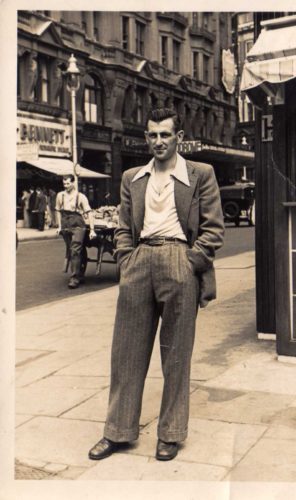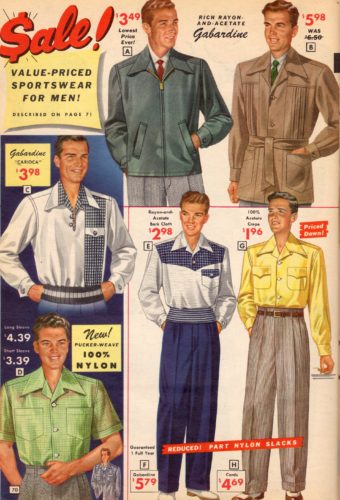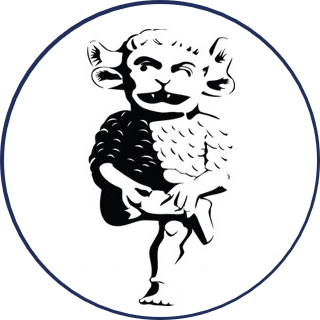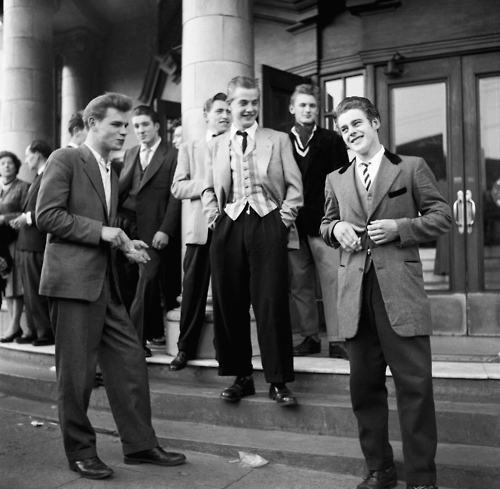
World War Two had been over for a while, but only in the 1950s did we Europeans begin feeling like we could celebrate. Sure, Americans had been living it up for years, but now that rationing had ended and our economy wasn’t a total mess, it was time to join in.
No longer held back by demands to save fabric, shirts grew a size too big, 90s style, and people were ok with that. They also started taking some lessons from their good friends in Italy. Men might have been fighting the Italians a decade before, but in the 1950s they were welcoming them into their wardrobes with open arms and even open-er wallets. Fashion had replaced fascism, so it was out with Mussolini and in with sharper shoulders, fitted jackets and narrower lapels. Italy hadn’t been this stylish since the Renaissance.
Thanks to the growing influence of Hollywood and an increasing amount of people who owned a TV, celebrities were making more of an impact than ever before. Perpetual badass James Dean may have only made three films in his entire career, but that didn’t stop him defining fashion long after he was gone. There doesn’t seem much special about a white t-shirt with a half-zipped jacket over it, but Dean wore that simple outfit like a rebel without a cause, and the youth of the ‘50s went mad for it. The leather jacket also received a lot of love from Marlon Brando, who wore one in the outlaw biker classic, The Wild One.

Of course, not everyone dressed like the Fonz. Stepping back from Dean and Brando, many men, particularly older ones, still dressed rather conservatively. That’s not to say fashion stopped reinventing itself however. Consisting of a daring combination of a buttoned up shirt with a cardigan and/ or suit over it, the ‘preppy look’ came out of nowhere but soon became everywhere. Bonus points were handed out for a cardigan with a big letter on it. Double-breasted suits, these days worn by Ryan Gosling and David Beckham, were also popular amongst upper-class men of conservative persuasion.
Mirroring the way society generally is now, the 1950s marked the first time in the 20th century where there was a significant gap between formal and informal men’s clothing. There were now actually options if you didn’t want to wear the same dark suits and drab ties your dad always had.
Next up is the Swingin’ Sixties, which means lots of James Bond and Don Draper.

